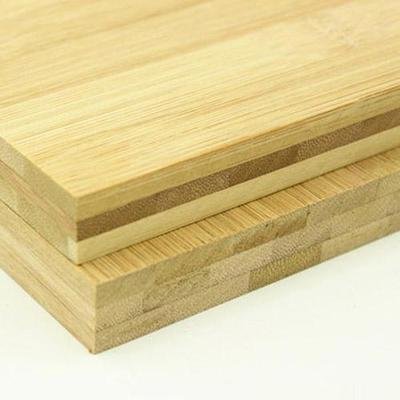If you’re wondering how to stain and finish bamboo plywood, you’ve come to the right place. This eco-friendly wood is durable and easy to work with, and is available throughout the U.S. and Canada. Learn how to use it in your home project, and discover the many benefits of bamboo. Listed below are some of its most important characteristics. Read on to learn more. Listed below are some common finishes for bamboo.

Eco-friendly
Bamboo plywood is an environmentally friendly, visual choice that can be stained and finished to create a variety of furniture and interior dividers. The wood-like appearance can mimic the look of other materials, making it an excellent choice for upscale interior design. Bamboo is a rapidly renewing material, so eco-friendly staining and finishing is important for creating beautiful and durable interiors. Although bamboo plywood is not readily available in finished form, most manufacturers will offer it unfinished. Because it accepts most stains, it may be carbonized to add a deeper color. You can also purchase bamboo plywood with its natural grain running horizontally or vertically.
To stain bamboo, make sure that you remove all wax or other materials on the surface before applying the stain. After cleaning and preparing the bamboo surface, apply three to four coats of stain, letting each dry thoroughly in between. Once you’ve applied the final coat, lightly sand the surface to remove any excess stain. Once the stain is dry, you can apply a second coat, but you should allow plenty of time between coats.
Bamboo plywood is easy to work with, and it can be treated just like other types of plywood. It can be cut and shaped with conventional woodworking equipment. Bamboo plywood is compatible with almost any kind of fastener and hardware. Because bamboo is low-resin, it absorbs stains and finishes beautifully. If you want a more luxurious look for your interior, bamboo is a great choice.
When staining bamboo, you need to be careful and use a water-based stain. Pigment stains can produce a blotchy effect on the bamboo surface. Choose moisture-balancing stains as bamboo absorbs moisture and can swell in excessive humidity. You’ll find that the process isn’t as simple as opening a can of stain. You must first determine whether the bamboo plywood is ready for staining.
Bamboo plywood comes in natural light or carbonized tone. Both have their own distinct surface grains. You can choose a rich honey color for the vertical bamboo variety. A few different finishes are available, including a UV-resistant stain. You can also choose a finish that protects the wood from fading. Choosing a color is crucial if you want a beautiful wood-look floor. Bamboo plywood is available in both vertical and horizontal orientations.
Durable
You can apply a wood stain or finish to bamboo plywood. There are several choices available, such as polyurethane, wax, and oil. To ensure the proper application, test your finish on a piece of sacrificial wood before applying it to the entire piece. You should avoid pigment stains, as they produce an unsightly blotchy effect. For a more professional finish, use oil-based or polyurethane stains. To ensure a perfect finish, keep the workroom between 60 and 90 degrees.
Once you’ve selected your finish, the next step is to apply a layer of mineral oil to the surface. Apply this mineral oil using a cloth and rub it in, ensuring that the whole surface is coated. For vertical surfaces, three to four coats are recommended. For horizontal surfaces, six to ten coats is sufficient. To get a smooth finish, you can use steel wool or a tack cloth. Remember to rub the surface in the direction of the grain.
After you’ve prepared the surface and applied a finish, you’ll need to apply a sealant to prevent moisture from seeping into the material. You should carefully follow the manufacturers’ instructions to avoid problems with adhesion. A wood varnish is available in both oil-based and water-based versions, ranging from satin smooth to glossy gloss. You can apply the finish using a brush, and it’s best to use a high-quality brush for this process.
In addition to stain and finish, you’ll need to consider the durability of bamboo flooring. Be sure to choose a product with a long lifespan and low VOC emissions. You can also choose a solid bamboo flooring option that’s sanded after installation. Bamboo flooring can be sanded on-site, but it won’t last as long as a factory-applied aluminum oxide finish.
Before staining, make sure to clean the surface. Once the stain is dry, you can wipe away any excess stain with a clean rag. After 24 hours, you can apply a second coat. You don’t need to sand bamboo before applying a second coat. You can apply a stain without worrying about fading the color. Bamboo is a great material for any type of project, from a child’s bedroom to a kitchen island.
Easy to work with
Bamboo is a grass, making it easy to stain and finish, but be careful when you do! Bamboo plywood absorbs moisture and will swell when exposed to too much humidity. When choosing a stain, look for an oil-based or polyurethane finish. Pigment stains will produce a less attractive, splotchy finish. Make sure to use a workroom with a temperature range of 60 to 90 degrees.
Before you start applying a stain to bamboo, sand the surface to remove any wax. Then, apply two or three layers of stain, allowing each one to dry between coats. After each coat, lightly sand the pieces to remove any excess stain. Once you’re satisfied with the color, apply a second coat. Follow the steps above for another coat of stain. Then, let the bamboo furniture dry completely.
Bamboo plywood comes in two different colors, the natural and the carbonized variety. Natural bamboo plywood is the natural color of bamboo, while carbonized is slightly darker. Carbonized bamboo plywood is resistant to stains and a lighter shade. Marbled bamboo is an amber color that blends light and dark tones. If you are in doubt, try some samples to decide which one best fits your needs. There are many different ways to finish bamboo plywood and choose one that suits your home.
Once you’ve decided on the color, you can apply a coat of stain and let it dry. To make the stain more durable, carpenters recommend rubbing wood conditioner onto the plywood’s surface before staining. To avoid warping, lay the plywood horizontally and away from air vents. Once the stain dries, cover the surface with a rag or cloth to prevent debris from blowing onto it.
If you don’t want to paint your bamboo plywood, you can also opt for a finish of wood varnish. Wood varnish seals moisture in bamboo, so following the instructions of the manufacturer is important. There are two types of wood varnish, oil-based and water-based, and they range from a matte finish to glossy. The bamboo plywood is usually stained using brushes, and it is recommended to buy better quality brushes to avoid digging out the brush hair.
